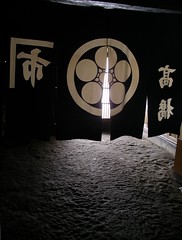Awaken YOUR Superhero Powers : Introduction
We live in an age starved for heroes. The resurgence of hero movies, hero TV shows, hero stories, and the willingness by the media to label anyone with an ounce of initiative a hero shows how badly we need to find heroes in our society.
But… what if you could have more? What if, instead of fictional characters in tights and capes on a screen, you could find a hero inside yourself? What if you could LIVE the powers of a superhero, brought to life inside your own heart and mind? Would you?
I’m going to publish a series of 10 blog posts on the topic – the 10 qualities of a superhero. The powers themselves are translated by Senior Master Instructor Stephen K. Hayes from the Enlightened Warrior Gyoja Practitioner Recitation Handbook, published by the Kinryuzan Golden Dragon Mountain Kasumi-An Dojo. These have very, very old roots, and the commentary on them is mine alone.
The ten qualities of a superhero aren’t a means to obtain superpowers, because you already have those. Today, from a device the size of a candy bar, you have access to the bulk of humanity’s knowledge. Today, from a telephone in a pocket, you can instantly communicate with the other side of the planet. Today, from any broadband computer with a Web browser, you can see and affect events in far away lands. The abilities technology gives us would have been labeled magical a hundred years ago, and sorcery three hundred years ago. You already have the powers; the qualities of a superhero are to help guide you and put them to use.
Shikin haramitsu daikomyo. Every day could be the day when it all comes together, when everything WORKS, and we begin to bring our potential to life. Get ready to awaken your superhero.
 {border=”0″ align=”right”}
{border=”0″ align=”right”}

